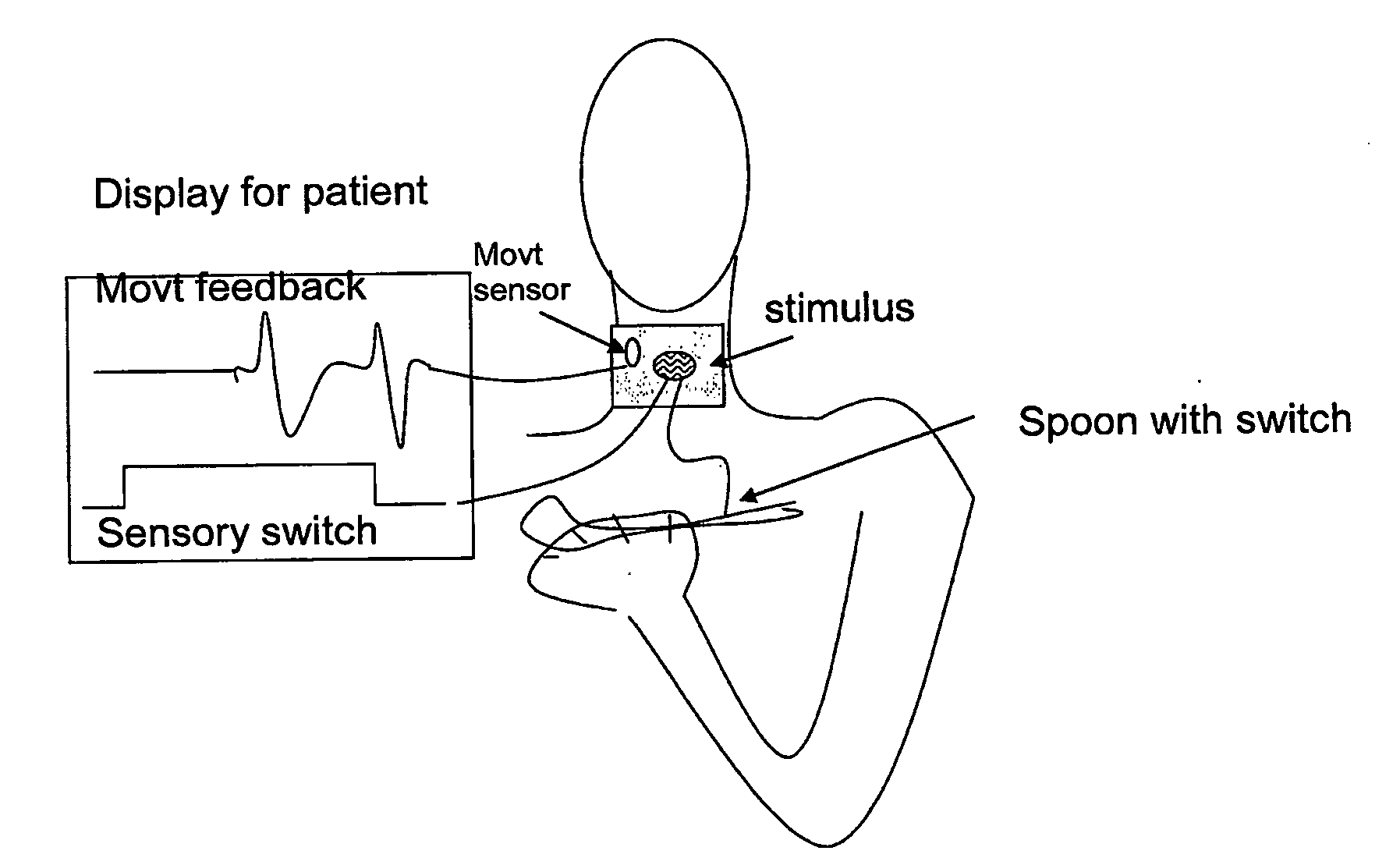Systems and methods for recovery from motor control via stimulation to a substituted site to an affected area
- Summary
- Abstract
- Description
- Claims
- Application Information
AI Technical Summary
Benefits of technology
Problems solved by technology
Method used
Image
Examples
example 1
A Study Demonstrating that Training Patients to Press a Button at the Time of Swallowing Enhanced their Ability to Swallowing Safely
Background
[0065]Previous muscle stimulation approaches during swallowing have either used continuous stimulation for prolonged periods during swallowing training, which can lead to muscle fatigue (Freed, Freed, Chatburn, & Christian, 2001), or have attempted to use surface electromyography (EMG) of the submental muscles to detect activity (Leelamanit, Limsakul, & Geater, 2002). Submental EMG signals, however, are often confounded by chewing activity that takes place during the oral phase of swallowing. We have previously demonstrated in normal volunteers that intramuscular stimulation can provide elevation of the hyo-laryngeal complex (Burnett, Mann, Cornell, & Ludlow, 2003), and that normal volunteers can easily learn to accurately synchronize a button press to trigger intramuscular stimulation coincident with the onset of the pharyngeal phase of swall...
example 2
A Study that Demonstrated that Low Levels of Sensory Stimulation to the Throat Area in Patients with Severe Chronic Pharyngeal Dysphagia Enhanced their Ability to Swallowing Safely while High Levels of Electrical Stimulation That Activated Throat Muscles Did not Enhance Swallowing in these Patients
[0080]Two hypotheses were tested using surface electrical stimulation in chronic pharyngeal dysphagia: that stimulation 1) lowered the hyoid bone and / or larynx when applied at rest, and 2) increased aspiration, penetration or pharyngeal pooling during swallowing. Bipolar surface electrodes were placed on the skin overlying the submandibular and laryngeal regions. Maximum tolerated levels of stimulation were applied while patients held their mouth closed at rest. Videofluoroscopic recordings were used to measure hyoid movements in the superior-inferior (s-i) and anterior-posterior (a-p) dimensions and the subglottic air column (s-i) position while stimulation was on and off. Patie...
PUM
 Login to View More
Login to View More Abstract
Description
Claims
Application Information
 Login to View More
Login to View More - R&D
- Intellectual Property
- Life Sciences
- Materials
- Tech Scout
- Unparalleled Data Quality
- Higher Quality Content
- 60% Fewer Hallucinations
Browse by: Latest US Patents, China's latest patents, Technical Efficacy Thesaurus, Application Domain, Technology Topic, Popular Technical Reports.
© 2025 PatSnap. All rights reserved.Legal|Privacy policy|Modern Slavery Act Transparency Statement|Sitemap|About US| Contact US: help@patsnap.com



